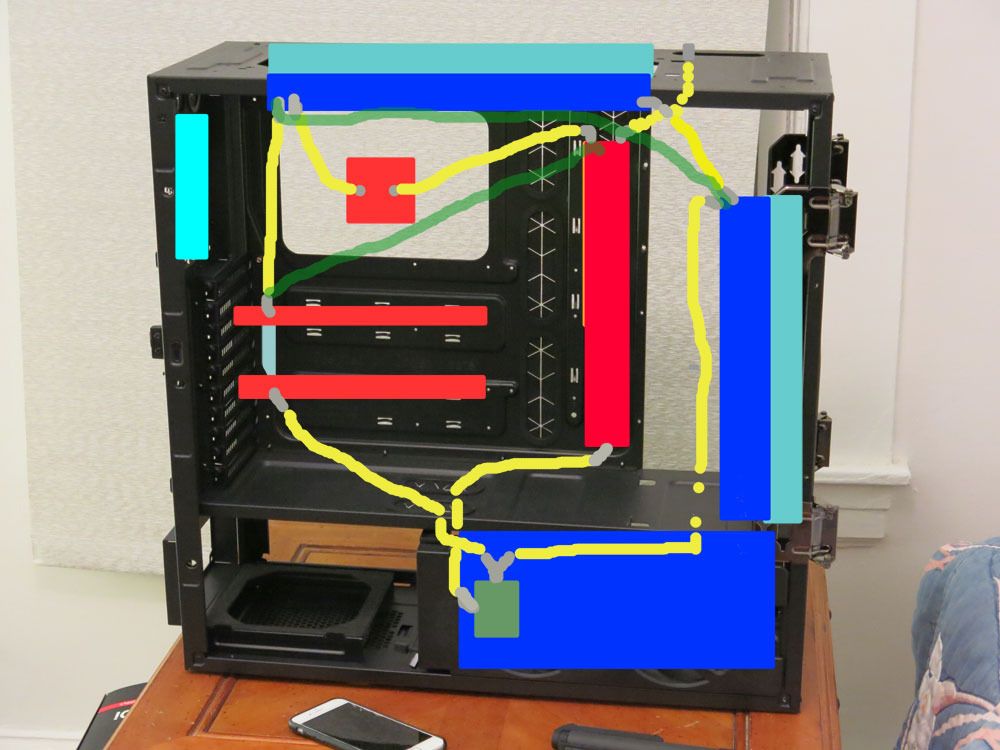Hi,
I want to cool the gpus and cpu with the same pump but split the flow to different rads and even use the top rads filport to merge the flow. Can anyone comment on my design?
Thanks

There are three rads. A 240 rad on the bottom, a 280 in the front, and 360 slim on the top. The red bar is reservoir. The green lines are an alternate plan where the water goes straight and returns to the res as opposed feeding into the top rads fillport. I designed it like this to minimize extra tubing length.
Thanks
I want to cool the gpus and cpu with the same pump but split the flow to different rads and even use the top rads filport to merge the flow. Can anyone comment on my design?
Thanks

There are three rads. A 240 rad on the bottom, a 280 in the front, and 360 slim on the top. The red bar is reservoir. The green lines are an alternate plan where the water goes straight and returns to the res as opposed feeding into the top rads fillport. I designed it like this to minimize extra tubing length.
Thanks
![[H]ard|Forum](/styles/hardforum/xenforo/logo_dark.png)